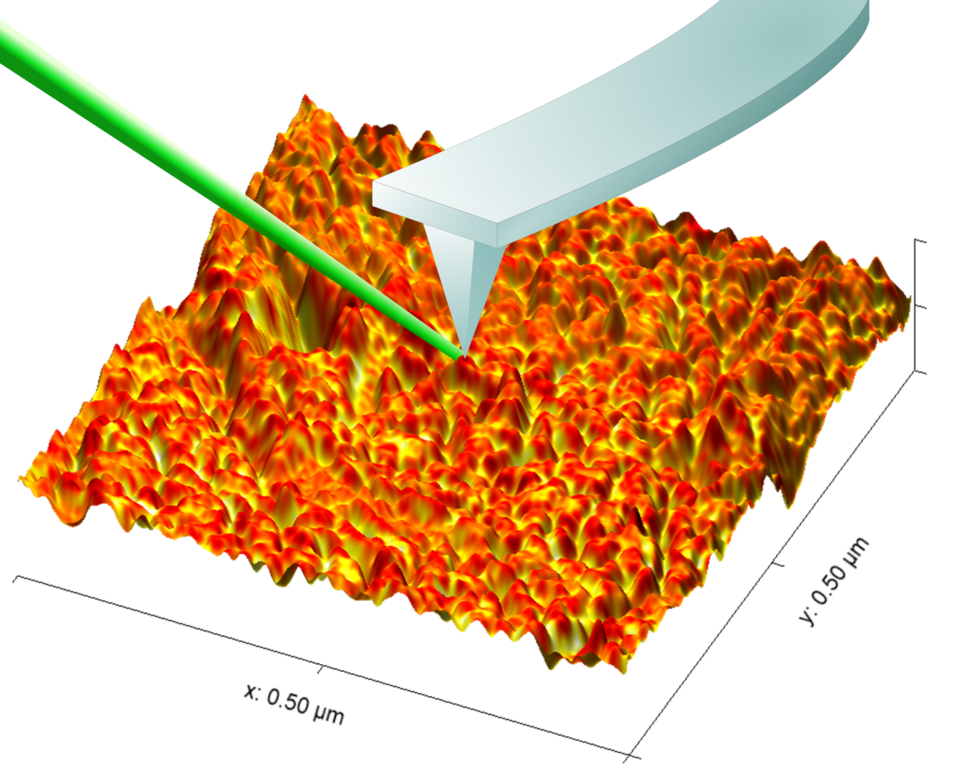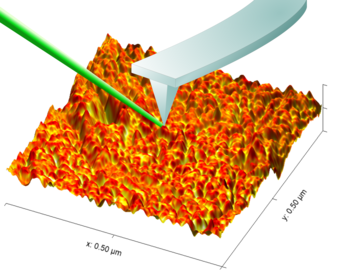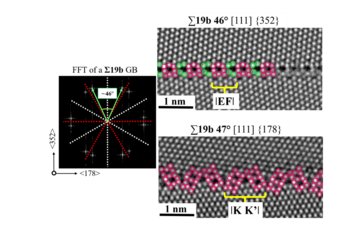Nano-structure of Applied Interfaces
The nano-structure of surfaces influences the interactions and reactions occurring on it, which has strong impacts for applications in diverse fields, such as wetting phenomena, electrochemistry or biotechnology. We study these nanoscale structures on functional interfaces by nano-spectroscopy. Furthermore we try to understand their influence on the interfacial solvent structure.

To that end, SAMs are a convenient tool for designing interface nanostructures. Nanoscale phase separated SAMs are studied by resonance enhanced atomic force microscopy IR spectroscopy (RE AFM-IR), a method that allows interface spectroscopy with resolution in the region of ~10 nm. Experiments in humidified atmosphere allow to study the structure of adsorbed ultrathin water layers that form on these interfaces. The aim is to obtain local structural information of water, adsorbed on nanostructured interfaces.
Another approach we follow, is the study of nanoparticles by means of solvation shell attenuated total reflection-infrared (ATR-IR) and Raman spectroscopy. This method includes multivariate data analysis approaches for which tools are developed in the group.












